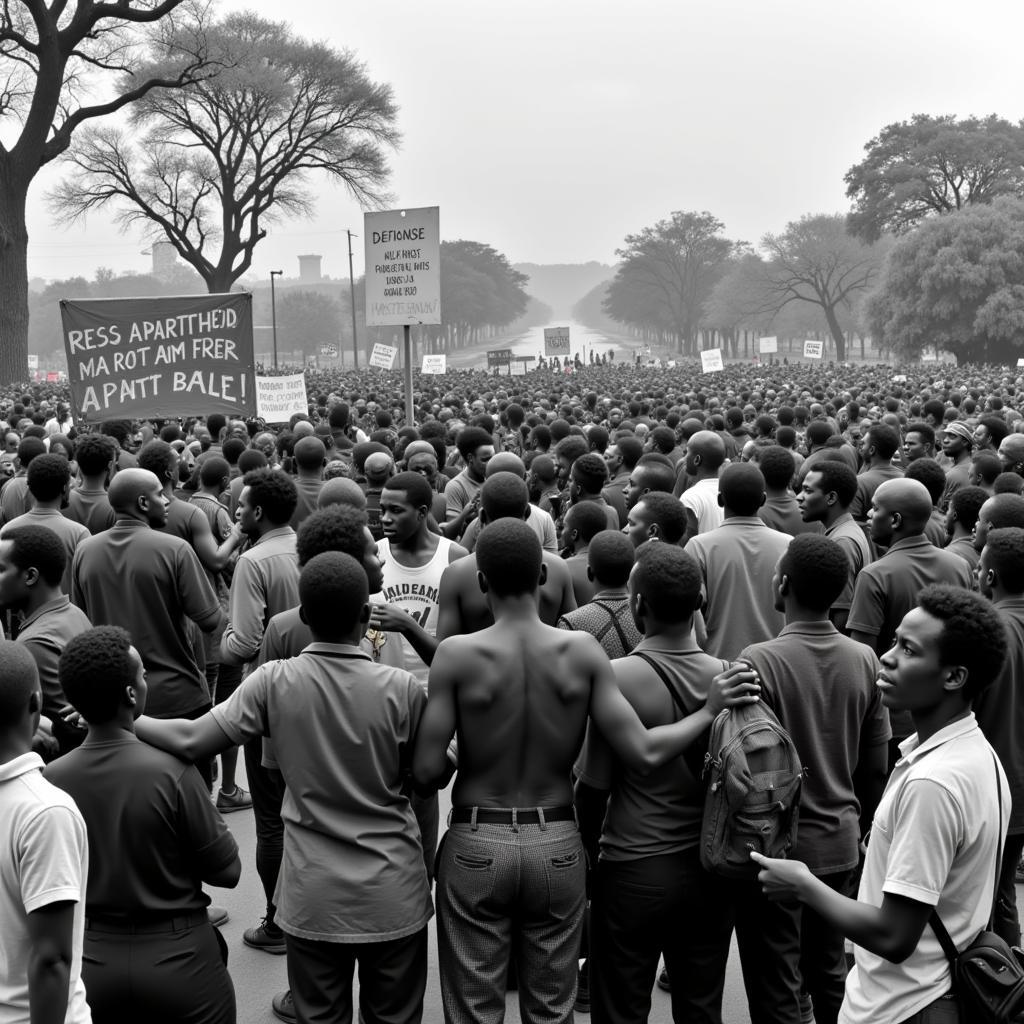Explain the Struggle of the South African People Against Apartheid
The struggle of the South African people against apartheid was a long and arduous journey marked by peaceful protests, armed resistance, and international condemnation. For decades, the oppressive system of racial segregation and discrimination known as apartheid cast a dark shadow over the nation, denying basic human rights to the majority black population. This article delves into the history of apartheid, the relentless fight against it, and the eventual triumph of freedom and equality.
Understanding the Roots of Apartheid
To comprehend the struggle against apartheid, it’s crucial to understand its origins. The system, which translates to “apartness” in Afrikaans, didn’t emerge overnight. It was rooted in centuries of colonial rule and policies that favored the white minority, particularly those of Afrikaner descent.
The discovery of diamonds and gold in the late 19th and early 20th centuries further exacerbated racial tensions, as white authorities sought to control these lucrative industries and the labor force needed to exploit them.
Following the National Party’s victory in the 1948 elections, apartheid was formally implemented as a system of legislation. These laws categorized people into racial groups and enforced segregation in every aspect of life, from housing and education to employment and political participation.
The Birth of Resistance
The imposition of apartheid sparked immediate resistance. Organizations like the African National Congress (ANC), founded in 1912, mobilized the black population and challenged discriminatory laws through strikes, boycotts, and acts of civil disobedience.
 South African Defiance Campaign Protests
South African Defiance Campaign Protests
One of the earliest and most significant acts of defiance was the Defiance Campaign of 1952, orchestrated by the ANC and the South African Indian Congress. Thousands of people, including prominent leaders like Nelson Mandela, deliberately violated apartheid laws, leading to mass arrests and garnering international attention.
Sharpeville Massacre: A Turning Point
The year 1960 marked a turning point in the anti-apartheid struggle with the Sharpeville Massacre. On March 21st, police opened fire on a peaceful protest against pass laws in the township of Sharpeville, killing 69 unarmed demonstrators, many shot in the back.
This horrific event shocked the world and exposed the brutality of the apartheid regime. It also led to the banning of the ANC and the Pan Africanist Congress (PAC), forcing these organizations to operate underground or in exile.
Armed Struggle and International Pressure
With peaceful avenues of protest effectively closed, the ANC and other liberation movements, such as the PAC’s armed wing, Poqo, adopted armed struggle as a means of resistance. The ANC’s armed wing, Umkhonto we Sizwe (Spear of the Nation), was formed in 1961, targeting symbols of apartheid infrastructure, such as power plants and government buildings.
Simultaneously, international pressure against South Africa intensified. The United Nations imposed sanctions and boycotts, and many countries divested from South Africa, isolating the apartheid regime on the global stage.
Nelson Mandela and the Road to Freedom
The imprisonment of Nelson Mandela in 1964 further galvanized the anti-apartheid movement. Mandela, a key figure in the ANC’s armed wing, became an international symbol of resistance and a potent reminder of the injustices faced by black South Africans.
Despite his incarceration, Mandela’s influence remained strong. He continued to be a powerful voice for equality and justice, even from within the walls of prison.
The Dismantling of Apartheid
By the late 1980s, a combination of internal unrest, international pressure, and economic sanctions had weakened the apartheid regime. Negotiations between the South African government and the ANC, spearheaded by Mandela upon his release in 1990, paved the way for a peaceful transition to a democratic South Africa.
The first multiracial elections were held in 1994, resulting in a landslide victory for the ANC and marking the end of apartheid. Nelson Mandela, the former political prisoner, became South Africa’s first black president, ushering in a new era of hope, reconciliation, and the promise of a more just and equitable society.
The struggle against apartheid stands as a testament to the human spirit’s unwavering pursuit of freedom and equality. It serves as a reminder that even the most deeply entrenched systems of oppression can be dismantled through courage, resilience, and the unwavering belief in the inherent dignity of all people.


